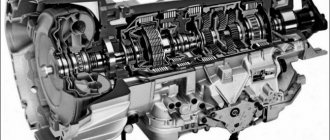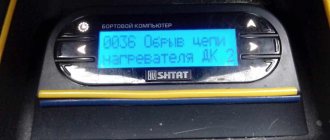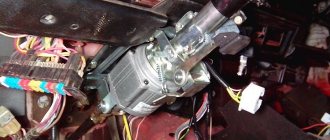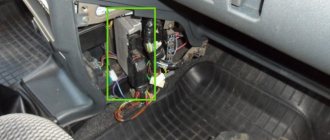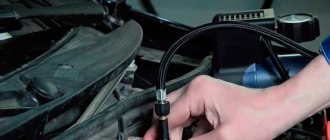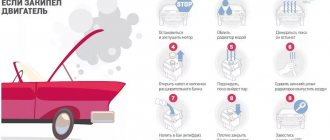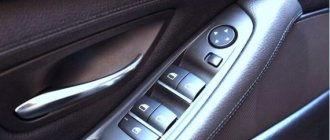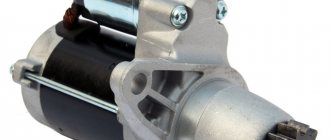Rate this post
The domestic small-class SUV Lada Niva, or Lada 4×4, or simply VAZ-2121 has been produced by the Tolyatti automobile plant for more than four decades. The model is in high demand not only among Russian car enthusiasts, but also among drivers in many other countries. The increased interest in the car is due to its uniqueness: an all-metal body instead of a classic frame structure, all-wheel drive with a center differential. Previously, few cars could boast of such a design, and those that were produced with such a transmission scheme were, as a rule, much heavier, larger and several times more expensive.
Throughout its history, the model was equipped with a manual transmission. Initially it was a manual transmission-4, since 1995 the SUV engine has been combined with a five-speed gearbox labeled VAZ-21214, which is actually a manual transmission unit-21213 adapted for 1.7 and 1.8 liter injection engines. In 2013, the mechanics underwent major changes and received a new name 21214M . However, along with the appearance of the new gearbox, constant conversations arose among car owners about where the howling and hum from the transmission on the Lada Niva comes from. Let's look into this issue further.
We get rid of vibration and extraneous sounds of the Niva transfer case forever
The characteristic howl and hum of the transfer case on VAZ-21213 cars, alas, is familiar to many owners of such cars. Let’s figure out what is the reason for these problems, and most importantly, how to get rid of them without using “collective farm” methods, such as additional noise reduction.
Content
- Let's understand the terminology.
- We study problems and repair methods. Vibration and how to deal with it.
- We remove the howl and hum.
- We remove the possibility of oil leakage.
- Niva (LADA 4×4)
Understanding the terminology
Let's start by diving into the materiel. Transfer case (TC) is a separate unit of an all-wheel drive vehicle, which provides multi-mode power distribution from the engine to the front and rear axles.
Externally, this is a mechanism located under the bottom of the car, in the body of which a multiplier (divider) is placed in series to obtain an intermediate gear ratio in the transmission and a splitter of one power flow into two. It is with the help of this device and its controls (levers) that go into the vehicle interior that the LADA 4×4 driver selects the all-wheel drive operating mode.
The RK directly connects the front driveshaft and the intermediate shaft (shaft) with the vibration damper to the vehicle’s gearbox. As is probably already clear from the description, this element is connected to the rear axle of the car via a rear propeller shaft.
We study problems and repair methods.
Any car owner definitely doesn’t need to be told why howling and humming are bad. Vibration of the transfer case on a Niva at low speed is quite common. The driver, of course, gradually gets used to many extraneous sounds in the car, but the noise level is high enough to make it impossible to carry on a conversation with passengers while traveling. Due to excessive noise pollution, you will inevitably have to deal with the problem.
Vibration and how to deal with it.
The main reason for the occurrence of unnecessary sounds is multi-frequency vibrations of the components of the transmission. In general, the vibration of the transfer case on a Niva is one of the most common cornerstones that other car owners are forced to fight (or put up with) constantly.
- Check the cushions (supports) on which the power unit, gearbox and other parts are attached to the body, including the muffler. Any worn-out pad or rubber band can easily cause excessive shaking of the iron and accompanying rumble. It is better to replace worn silent blocks and pillows immediately.
- Be sure to pay attention to the intermediate shaft (inlet shaft). If you see signs of “fatigue” - change the elements that have become unusable, or the entire part!
Perhaps this is the most complete set of measures that experienced auto mechanics advise when the transfer case on a Niva hums and vibrates!
Removing the howl and hum
We will assume that we have dealt with the vibration, but an equally significant problem remains - how to remove the howling of the transfer case on the Niva. Vibrations of the mechanism are not always the only reason for the appearance of extraneous irritating sounds. And the characteristic noise of the transfer case, alas, is one of the “trademark” shortcomings of one of the best domestic SUVs.
- The first thing you should pay attention to is the levers. It is better to immediately replace them with silent ones - with anti-resonance bushings inside. They won’t eliminate all the noise, but they will definitely extinguish some of it.
- The result will be even better if you install a small-module transfer case - with front and rear covers equipped with double-row bearings. In 2010, AVTOVAZ introduced new double-row bearings for output shafts in order to get rid of backlash and runout, as well as extend the life of the seals and, in general, increase the reliability of the mechanism. Here logic is man’s friend: less shaking and hesitation means higher service life and reliability.
Removing the possibility of oil leakage
In an effort to resolve the question of how to get rid of the howling of the transfer case, even before the 2010 update, the manufacturer began assembling this mechanism using silicone sealant instead of cardboard gaskets. And he introduced an improved crankcase ventilation system with an open breather, which was located under the hood. Again, the reliability of the vehicle when passing fords has increased slightly, and most importantly, the load on the seals has also decreased.
We mention them again to point out that the fewer vibrations and shocks, the longer it will not take to detect an oil leak on the transfer case housing due to deteriorated seals. Moreover, the flange in the RC covers can cause noise - during operation, the bearing seats are simply broken.
We hope that the steps listed above will become complete step-by-step instructions on how to eliminate transfer case noise on a Niva.
A universal remedy that will definitely eliminate the noise of the transfer case?
For people who do not want to spend a lot of time modifying the components of their SUV, there is a proven solution. A fairly reliable universal option for how to remove the howling of a transfer case on a Niva, one might say, know-how from the SV-PARTs company, is the installation of a steel four-satellite differential.
Howl and hum from the transmission on Lada Niva: we figure out what the problem is and how to fix it
The domestic small-class SUV Lada Niva, or Lada 4×4, or simply VAZ-2121 has been produced by the Tolyatti automobile plant for more than four decades. The model is in high demand not only among Russian car enthusiasts, but also among drivers in many other countries. The increased interest in the car is due to its uniqueness: an all-metal body instead of a classic frame structure, all-wheel drive with a center differential. Previously, few cars could boast of such a design, and those that were produced with such a transmission scheme were, as a rule, much heavier, larger and several times more expensive.
Throughout its history, the model was equipped with a manual transmission. Initially it was a manual transmission-4, since 1995 the SUV engine has been combined with a five-speed gearbox
labeled VAZ-21214, which is actually a manual transmission unit-21213 adapted for 1.7 and 1.8 liter injection engines. In 2013, the mechanics underwent major changes and received a new name 21214M
. However, along with the appearance of the new gearbox, constant conversations arose among car owners about where the howling and hum from the transmission on the Lada Niva comes from. Let's look into this issue further.
Dismantling
- To remove the manual transmission, you will need a “13” wrench (open-end or ratchet), a flat-head and a shaped screwdriver. For convenience, removal is carried out in the inspection pit.
- Inside, use a screwdriver to remove the decorative trim of the levers. Under the cover there will be a boot of two shift levers, which is also removable.
- The cardan shafts are being dismantled. This is done using the key at “13”. The front and rear driveshafts are disconnected in the same way. Before removing the shafts, you need to mark the seat with the cardan fork so that vibration does not occur after installation.
- The speedometer cable is dismantled by unscrewing one nut and moved to the side.
- Next, unscrew all the bolts securing the transfer gearbox through the supports to the body and remove the gearbox.
Who is to blame and what to do?
I think that the first question is rhetorical))) But let’s try to answer at least “why this is so.” I am a mechanical engineer by education and work, production technology is at an average level, so I turned to a military plant technologist for advice. How it should be: the workpiece is made with a press, rough processing is carried out with allowances, a thermal treatment is made, the part is processed completely according to the “main and landing” dimensions. How it was done: the last stage was removed. After heat treatment, the part warps and does not come out clean. Or it is placed on a cylindrical mandrel during finishing processing, which cannot be done. Since with this design, everything is centered on the splines.
The answer to the second question. We buy a box at the factory containing 100 “semi-finished” flanges wrapped in oil paper, drag them to the lathe, set up the “finishing fixture” and finish the entire batch.
The device of the VAZ Niva transfer case
The transfer case is not present in all VAZ passenger cars, but only on cars with two drive axles. In the transmission, the transfer case (TC) is installed at the rear of the gearbox; a rear driveshaft is attached to its shank, which connects the transfer case to the rear axle. The front axle is also driven by the steering wheel; it is connected to the transfer case by a front driveshaft.
The reduction gear in the Republic of Kazakhstan is designed to obtain high torque, it is used to overcome difficult sections of the road, and helps to cope with off-road conditions. The VAZ Niva transfer case contains the following main parts:
- the body itself;
- front axle drive shaft;
The transfer case of the VAZ 2123 car has fundamentally the same device as unit 21213/21214, but in the Chevy Niva:
- another control mechanism (with one lever);
- an additional support was installed (on a simple Niva the RK is mounted on two supports, on a VAZ 2123 car - on three supports).
hum and howl when moving in tension | Topic author: Liane
Dear friends! My father bought a Chevrolet Niva in January 2022, before that he only drove right-handed cars. Before buying, we took it for a test drive, and there seemed to be no noise, but when we brought ours, until we arrived from the car dealership, we didn’t seem to notice such obvious noises, especially since we were driving no more than 40 km/h. Then, over time, we began to drive faster and noticed a howl and hum emanating from either the roofing felt box or the transfer case. We changed all the oils completely and everywhere, in general, everything that could be lubricated))! And it didn't help! The howling remained the same starting from 50 km/h and then increasing, and the most important thing is that the intensity of the sound increases when driving under tension, as soon as you increase the gas, everything goes away! Yes, and in the first 2 gears, the hum is present, but very weak. The car's mileage today is only 4 thousand/km.
Please tell me what this is and how to deal with it! Thank you in advance!
Sergey (Ragnar) Sergey, this is normal. As all the seals are replaced and the mechanisms are ground in, the noise will go away
Sergey (Ragnar) Thanks Sergey!
Andrey (Jasmeen) I had such a problem, at first it hummed slowly, then stronger and stronger, the hum came from the front axle gearbox, I changed the oil, it didn’t help, in the end it jammed, I had to change the gearbox, the hum disappeared!
Sergey (Ragnar) Andrey, I also had something buzzing in third.
I drove 24 thousand, but now it seems not.
Vasily (Marah) I had a hum starting from 60 km/h. They climbed a hundred and listened, they said that the handout was good. I spent a whole week thinking about what to do, replace it with a new one or remove it and give this one for repair. The car is new, produced in 2022. A friend works in a service center and advised me to change the oil in the transfer case to the Russian mineral w85-90, and add an anti-noise additive, like after 300 km all the noise will go away... I changed it, at the same time changed the axles, drove 300 km, nothing was missing, and now I’m driving like this then one day and suddenly it suddenly dawned on me that the hum was coming from the ROOF RACK)))) I removed the trunk and everything went away.
Alexey (Chalissa) guys, such a problem, I bought a Niva, it means there is a howling, and as the speed increases, the howling increases, as soon as I press the clutch the howling disappears, it comes from approximately under the gearbox lever, I looked around a bunch of frooms but found nothing, maybe you what do you suggest?
Dmitry (Sancho) Or maybe this is a feature of our Lada cars? It is very difficult to judge what your howl is. Moreover, the transfer case howls due to its design feature. Comparing the noise level with foreign cars is the same as driving comfort between an UAZ and a gelding. Ride other tires and compare the noises.
Igor (Annig) Alexey, what was not determined (otherwise it’s the same garbage)
Irinka (Artemios) Niva 2022 Mileage 30,000. Transmission filled with Liquid Moly - Everything is just super. Niva 2022 Mileage 8,000 Filled in trans. Liquid Moly. Vibration, noise and a terrible rumble began. 1 Changed the oil (drained CLEAN oil) in the gearbox and RC with Champion mineral water - NO changes. 2 I started changing the oil in the rear gearbox and drained the BLACK oil. Filled with clean and fresh oil. No changes. The vibration has increased! Guys, tell me what to do and what to do
Ivan (Vitthala) Hello guys, about the hum. I've already driven 270,000 on the shnivy, the hum has remained the same. What to do next?
Oleg (Sonoma) Sell and buy new
Marina (Landen) Steam locomotives hum; and the wind howls
Vasily (Marah) humming noise, from 10 km/h. replaced under warranty. humming and under tension and when you accelerate and go on gas at 4th 50 km/h and above. when releasing the gas there is no hum... like on a trolleybus in Soviet times.
Evgeny (Budd) Vasily, what was replaced under warranty? Gearbox, transfer case? I have the same trolleybus...
Vasily (Marah) The transfer case was replaced. The noise remained as it was. The howl of the Razdatka was added. So that…
Evgeny (Budd) I see, I’ll try to change the gearbox, but the diagnostics have no result at all. It only howls under load directly on the road..
Sergey (Ragnar) nothing will go anywhere) there will be a howl and it won’t go anywhere.!!!
Evgeny (Budd) Sergey, it howls and howls) it wouldn’t fall apart on the move) if I knew for sure where it was normal and where it was faulty... there are fields that howl! 10-15 percent)
Sergey (Ragnar) Evgeniy, when accelerating from 60 to 75, it starts whining and subsides, it’s like this in the transfer case almost from new, about 3000 km away, it started now at 52,000 it’s all the same.. I don’t worry about driving
Tags: How to determine whether a bridge or transfer case is humming in a field
Repair of intermediate shaft Niva VAZ 21213, 21214, 2131 lada 4×4
We mark the location of the coupling relative to the flange,...
| ...as well as the number and location of balancing washers relative to the coupling. |
| While holding the bolts from turning with a 19mm wrench, use a head of the same size to unscrew the three nuts. |
| Disconnect the coupling and flange. |
| By turning the hinge, remove the bolts from the holes in the elastic coupling flange. |
| Using a screwdriver, remove the plastic plug. |
| Squeeze the clamp with sliding pliers and remove it. |
| We use a screwdriver to move the plastic casing... |
| ...and remove the rubber protective cover from the constant velocity joint housing. |
| We place the hinge body on the open jaws of the vice and, striking through a soft metal drift at the end of the elastic coupling flange, knock out the flange. |
| Separate the hinge and flange. |
| Pull the plastic casing off the rubber boot. |
Pulling off the rubber boot...
| ...we compress the clamp with sliding pliers and remove it. |
| Remove the rubber protective cover. |
| Using a screwdriver, remove the hinge retaining ring. |
Disassembling and assessing the condition of the hinge parts are similar to the corresponding operations described in the chapter Front wheel drive.
We assemble the intermediate shaft in the reverse order. We put 20 cm3 of CV joint grease into the rebuilt or new hinge. Before connecting the hinge to the flange of the elastic coupling, install a small clamp of the rubber protective cover.
| We press the hinge onto the flange, striking through a piece of pipe onto the hinge holder. |
| Before installing the rubber coupling, we compress it with a clamp. |
We place the used coupling according to the marks relative to the flange. We place the previous balancing washers according to the marks relative to the coupling. When installing a new coupling, the shaft assembly may need to be balanced.
What to do with excess noise on the VAZ-2121?
Cardan shafts on CV joints have further reduced the level of vibration and noise, but they have actually become maintenance-free. If a serious breakdown occurs, the complete unit will need to be replaced. It's easy to guess that this is not a cheap unit. Operating the car in difficult conditions only increases the likelihood of damage to the boot, and this is fraught with serious financial costs. So, we get that the noise of the transfer case is a design feature of the car, which you either have to put up with or look for ways to resist. One of the ways is to install a subframe or the same CV joints on previous modifications of the car. Sometimes car owners try to combat howling and humming in the cabin by improving sound insulation. But usually a new Shumka does not help and becomes only a waste of money.
You can modify the car as follows:
- installation of the RK subframe;
- silent RK handles;
- front axle gearbox release brackets;
- replacing the factory clutch with a unit from a Chevrolet Niva.
It is not at all necessary to do all this work on the car. It all depends on the owner’s requirements, assigned tasks and operating conditions. A subframe under the manual transmission and transfer case will reduce vibrations and extraneous sounds emitted by the units to a minimum. It is a natural way to protect the transfer case and increases the possibility of adjustment along the axes. Numerous tests have shown that this particular method of combating howling and humming is the most effective. Typically, the kit is made of structural steel, which allows you to accelerate the car without excessive noise up to 140 km/h, provided that you have the appropriate motor.
Complete sound insulation of the interior with high-quality sound-absorbing materials is advisable if at least one job from the presented list of ways to combat car noise has been previously completed. The operating comfort of the machine can be increased with the help of double-row imported bearings and seals pressed into the rear cover of the transfer case and the front axle disengagement clutch. Such a kit can not only eliminate hum, howl and vibration, but also prevent oil leaks on the transfer case flanges. In general, there are not so few real and effective ways to improve the comfort of an SUV.
The device of the VAZ Niva transfer case
The transfer case is not present in all VAZ passenger cars, but only on cars with two drive axles. In the transmission, the transfer case (TC) is installed at the rear of the gearbox; a rear driveshaft is attached to its shank, which connects the transfer case to the rear axle. The front axle is also driven by the steering wheel; it is connected to the transfer case by a front driveshaft.
The reduction gear in the Republic of Kazakhstan is designed to obtain high torque, it is used to overcome difficult sections of the road, and helps to cope with off-road conditions. The VAZ Niva transfer case contains the following main parts:
- the body itself;
- front axle drive shaft;
- intermediate shaft;
- drive shaft;
- gears;
- bearings;
- differential housing;
- satellites;
- differential lock clutch;
- gear shift clutch;
- flanges (for connection to cardan shafts);
- oil seals;
- control levers.
Common Lada 4×4 transmission problems
You can often hear from drivers that the car’s transmission is constantly humming and crunching. Many people have to sort out the gearbox after 20 thousand km, and then carry out minor repairs every 10 thousand km. High-quality foreign additives and oils do not radically change the situation. Howling and humming are a characteristic feature not only of the Lada Niva, but also of other AvtoVAZ vehicles, for example Lada Granta and Lada Kalina. AvtoVAZ is aware of this problem. Unpleasant sounds and crunches in the operation of the transmission are explained by poor modification of the teeth of the gears and the main pair. In 2014, the unit was seriously modified, but the problem was never completely eliminated.
Representatives of the plant comment on the fatal problems of the gearbox:
The factory has been fighting the rumble and howl of the transfer case virtually from the very moment the car appeared. In 1999, the Niva was equipped with an improved transfer case with fine-module gears. The level of external noise was indeed reduced, but the question of reliability and endurance of the modernized unit arose. Today, the Lada Niva 21214-M is equipped with a sealed transfer case with an updated ventilation system and an open breather located in the engine compartment. The design eliminates the possibility of excess pressure forming in the crankcase. Serious changes have also occurred with the cardan shafts: now they are on CV joints with boots. The plant's new balancing stands now make it possible to equip cardans with greater geometric accuracy.
Eliminate vibration with additional fasteners
Installing the third support of the transfer case on VAZ 21213/21214 vehicles allows you to reduce the level of vibration of the transfer case; with this support it is easier to center the transfer case. The part can be purchased at auto stores or made yourself. The finished product comes with three long studs (for model 2121); to install the third support on this machine, you will need to unscrew the short studs from the transfer case housing and install new studs from the kit. We carry out repairs as follows:
Vibration is eliminated more effectively by installing a subframe under the transfer case. You can also make such a device yourself or buy a finished product at a car store.
In order to install the subframe, the transfer case must be removed. It is more convenient to carry out such work in a pit; we carry out repairs as follows:
- leave the car in neutral gear;
- disconnect the propeller shaft from the transfer case, it is advisable to mark the driveshaft flange and the drive shaft so that during installation, align the driveshaft according to the marks - this way, the occurrence of unnecessary vibrations is eliminated;
- dismantle the muffler mounting bracket;
- remove the gearbox traverse;
- jack up the transfer case, remove the side fastenings of the transfer case;
- We treat the places where the subframe fits to the body with Movil;
- place the subframe on the gearbox studs;
- we mark the attachment points of the subframe on the side members, drill holes, attach bolts to the body;
- we tighten all fastenings, except for the transfer case supports themselves;
- we perform alignment of the steering wheel;
- Finally tighten the transfer case supports.
It should be noted that installing an additional support or subframe on the steering wheel does not always lead to the desired effect; in some cases, vibration only increases.
Do-it-yourself gear shift assembly adjustment
To correctly adjust the gear selection mechanism you will need a 13 key
Sequencing:
- We start the engine, engage 1st gear. As soon as the car starts to move, we stop and turn off the engine. In this case, we leave the first gearbox speed in the ON position. We put the car on the handbrake and anti-rollbacks.
- We loosen the coupling bolt of the clamp securing the connecting rod of the gearbox under the body. For ease of work, you can use a lift, overpass, pit or jacks.
- We move the plastic traction lock located in the passenger compartment all the way to the extreme left position.
- Then we fix the loosened bolt of the mounting clamp back.
You can also try one more method to eliminate rattling and play in the gearbox handle: using a “13” wrench, you need to tighten the lever fastening nut until the axial play is eliminated.
The lever nut must be tightened to a torque of 24.5 Nm (2.5 kgfm).
If, after the adjustment has been made, the same difficulties with gear shifting and vibration remain, this means that this unit is worn beyond the permissible norm and needs to be replaced.
Repairing faults and adjusting the VAZ-2123 steering gear
Bleeding and adjusting the Chevrolet Niva clutch: step-by-step instructions
How to repair a Chevrolet Niva transfer case with your own hands: detailed disassembly instructions
Vibration
Vibration in the body is the main “disease” of the Niva; it is often incorrect due to the alignment of the transfer case. Vibration most often occurs on VAZ 21213/tak, 21214 cars, as the transfer case is mounted only on two sides along the body supports; on the Chevrolet Niva, the transfer case is already installed on three supports. But before you start adjusting the position of the transfer case, you should check the condition of other parts of the chassis - vibration can also occur for other reasons:
- the cardan shafts are poorly secured;
- wheels are not balanced;
- there are crosspieces in the backlash of the cardan shaft (vibration is especially affected by crosspieces in the backlash of the rear propeller shaft);
- the vibration itself comes from the engine.
Vibration when starting off from the Niva can also occur due to the following reasons:
- reasons for fastening the transfer case mounting supports;
- the rubber broke on the RK supports themselves.
Diagram and description of the design
The steering gearbox is a separate unit in the steering gear system, the main element of which is the worm shaft. It increases the force applied by the driver to the steered wheels when the steering wheel is rotated.
Typical diagram of a Niva Chevrolet steering gear:
https://www.youtube.com/watch?v=tPEPMc0J0ug
This part has the original serial number: 2123-3400010-20.
The mechanism is put on the market assembled with a bipod in a branded white and blue cardboard package with a quality certificate and an annual guarantee.
The Chevrolet Niva uses a mechanism in which a globoid-type worm (variable shaft diameter) is installed. This design ensures reliable vehicle control at any speed and on different road surfaces.
In the steering system gearbox, the worm shaft rests on 2 rolling bearings, the same number of bearings support the rotation of the bipod shaft. Ball bearings serve to reduce friction of the main parts, also making it easier to turn the steering wheel in different directions.
When the steering wheel rotates, torque is transmitted from the steering column shafts to a worm unit, which is engaged with a roller located on the bipod shaft.
Reference! The gear ratio is 16.4.
The bipod connects the steering linkage system through articulated pins. The transmission of movement from the middle rod to the right side rod occurs through a pendulum lever.
The worm steering mechanism used on off-road vehicles is quite shock-resistant. It easily absorbs all vibrations and irregularities from the road surface
Useful! The minor disadvantages of this mechanism include the complexity of manufacturing. Also, due to the large number of moving and rubbing elements, the worm gear must be tightened at certain intervals.
During vehicle operation, moving elements wear out in the worm gear over time and the technological gap increases. As a result, extraneous sounds appear. The first signs of an adjustment violation are a beating and a significant increase in the free play of the steering wheel, and the clarity of vehicle control is lost.
All this directly proportionally affects the safety of driving this car. If you do not adjust and tighten this play of the main pair in time, then due to the resulting runout, scuffs begin to form on the metal of the worm and bipod and the drive completely fails.
Important! Steering is one of the main vehicle systems responsible for safety. Therefore, operating a car with a faulty steering system is prohibited by the Road Traffic Rules.
How to use a distributor in the field
The transfer case on a Chevy Niva in its normal operating position is a differential lock, the first center lever must be unlocked and is in the extreme forward position, the overdrive is in the extreme rear position.
What kind of drive does the Niva have? The transmission distributes all-wheel drive to all four wheels in all Niva models.
How to turn on all-wheel drive in a field
In the normal operating position, the transfer case controls are removed from you; in this position, all-wheel drive operates. The front handle is away from you, the back handle is opposite to you. Forward locking is low-high.
You need to engage a low gear while the car is stationary, because if you move you can break teeth or screw something up, you shouldn’t do this. When overcoming difficult sections, you need to depress the clutch and turn the gearshift lever downwards. The Niva gearbox lever works smoothly. The Niva gearbox itself should not make noise. Everything should turn on effortlessly, without jamming.
Checking the lock
You need to remove any of the wheels and engage the lock, engage the gear and move off. If the car does not move, the lock does not work. There may be breakdowns. The lock can be activated both while the vehicle is stationary and while moving. When stationary, it may or may not turn on, depending on how the teeth are positioned on the differential. They may be slightly misaligned. If it doesn’t turn on, you need to drive the car a couple of meters forward or backward.
We turn on a lower gear, start the car, put it in first and off we go. When we are driving, we release the gas pedal a little and pull the locking handle towards ourselves, the indicator light comes on. Under load, if you drive under tension, it will not turn off. With a slight over-throttle, the downshift is switched on and also quietly switched off.
When accelerating from a neutral position, do not engage a lower gear, because it will start to crunch until it stops completely. We stopped, lowered the car if necessary, and drove on. To turn on the increased when moving the handle down and all the way.
Tips for owners
To make driving your car comfortable, read some important points:
- The usual, standard arrangement of the front and rear handles is forward and backward, respectively. Movement in this mode can and should be carried out in areas characterized by even and smooth surfaces.
- Locking the differential by switching the front handle to the rear position is best on roads characterized by increased slipperiness. This measure will give Niva stability. It is worth understanding that after overcoming the problem area, the handle will need to be returned to its original position.
- As noted earlier, downshift should be activated before a potential obstacle, but not while the car is already stuck.
- It is worth understanding that activating the lock when the vehicle is stationary is sometimes impossible, even if the clutch is depressed. This may be caused by the clutch teeth hitting the gear teeth. In this case, you can try to activate the lock by starting to drive slowly and make a slight turn. If problems arise with disabling the lock, it is recommended to perform the same procedure with the clutch depressed and the steering wheel slightly rocked.
Also interesting: Tuning a Niva 4x4 with your own hands: updating the interior of the Lada VAZ-2121
Niva transfer case repair
Below will be a list of faults characteristic of this unit and a list of their repair methods. This list is relevant only for the VAZ 2121 and LADA 4×4.
1. Vibration felt in the legs in the front seats. It is especially noticeable when starting to move or accelerating the car.
- the fastenings supporting the gearbox or transfer unit are loose or damaged. To fix this problem, you just need to tighten the fasteners.
- damage to the fastening support devices of the gearbox or transfer case. In this case, it is necessary to replace the faulty elements with new ones. Check the alignment of the drive shaft in accordance with the gear shift mechanism.
- deformation of the bolts supporting the elastic coupling has occurred. Eliminated by replacing the bolts or the entire intermediate shaft.
- the special fastenings supporting the elastic coupling have been weakened. Just pull them up.
Specifics. Flanges and helicopters.
Modified gearbox and transfer case flange. The results surprised even us, although it seems that nothing in this car should surprise us anymore. The photo shows the gearbox flange, also known as the transfer case flange. And it seems to be a rotating part with an even number of splines and an even number of holes. But you can’t “take” an AvtoTAZ so easily. This part has a landing diameter (along the splines) and a mating plane. We made a device from the transfer case output shaft. We very carefully centered them for axial runout, and clamping the flanges, as we do on transfer cases and gearboxes, began to check them for runout of the end plane. The results are depressing. 20% of products DO NOT have runout. There were flanges where the runout reached 0.5 mm. To avoid doubts about spare parts, we removed the flanges from the conveyor machines, the result was the same. On checkpoint “helicopters” the picture is exactly the same.
What's the noise (noise in the transfer case, gearbox)?
Reg.: 02/16/2015 Messages: 2 From: Russia, Yaroslavl Age: 34 Car: VAZ 21214, 2004
Hello! I’ll write in this topic, Google directed me exactly here.
My gearbox began to howl loudly. Moreover, it howled a little before (probably, like everyone else, such a trolleybus rumble), no new sounds seemed to be added, but the old ones became many times louder, it hurts the ears in the cabin. The gearbox howls exactly, in 1st, 2nd, 3rd gears, and in 4th everything is quiet at any speed. There is no whine at all when pressing the clutch. In neutral, if you release the clutch, the sound also became a little louder (previously it was only noticeable if you listened) than before, but the annoying loud howl is in 2nd-3rd gears, under load or when braking the engine.
The oil in the gearbox is normal (although I immediately thought about it), after the whine appeared, they replaced it with a new one - nothing has changed.
I have read many messages with similar problems, but my case is different in that the loud howling appeared precisely after I replaced the clutch myself (by me)
Everything went, in principle, without complications, except that there was one nuance: when removing the CV joint, I unscrewed the nuts from the bolts securing the CV joint donut to the box, but forgot to remove the bolts themselves from the donut - due to inexperience, I thought that the CV joint would move back and the donut itself would come off the bolts — tugged the gearbox back and forth - it didn’t work, until I got the strength to return the gearbox to its place, it hung on the gearbox + lowering lever for half a minute, although I don’t think that this could ruin the gearbox. I replaced the washout and the rear gearbox support cushion, the rubber on the old one was cracked. That's all. The box seemed to fit back in without any problems, nothing was hammered in by force. I didn’t drop the gearbox, didn’t hit it :)) When you screwed the gearbox (together with the clutch housing) to the engine, the gearbox itself, I hope, did not need to be “centered” relative to the engine, it itself gets in the right place? :) What could be the reason for such an increase in howling? in the gearbox after removing/installing it? In the cabin, I re-checked the noise under the decorative panel several times, even added a layer of new noise - the howling does not become quieter, it seems to be spreading all over the bottom.
I don’t even know in which direction to dig, before replacing the clutch to the gearbox there were no complaints at all. Where could I screw up with the box?
I drove it again, I’ll add: in 5th gear the hum appears again, but a little different. On the 4th everything is quiet. Grinding, crackling, knocking - nothing can be heard, only an terribly loud, even hum of approximately the same pitch - it is much louder than the engine, heater, or heater fan. It’s as if it’s the same sound as before, only very amplified by some kind of “horn”
Lada 4×4 3D Adventure time ⌚ › Logbook › Installation of a vibration damper and the third support of the vehicle
After installing the transfer case supports of the new model, incomprehensible knocking noises appeared, which seemed to have gotten rid of, but they came out again.
I assumed that due to the “softer” supports, the transfer case sways more and this causes shocks in the transmission. This did not happen with the old supports. Reading the next entry in the BZ on the drive, I saw that a person had installed a subframe and was giving away for a nominal fee (500 rubles) a traverse with a vibration damper and a third support of the RK. I bought it for an experiment, although delivery cost the same 500 rubles. But in general, it is several times cheaper than buying the same spare parts new in a store. =)
The vibration damper was slightly bent, or rather its mounting. I straightened everything out, assembled it, and installed the traverse. There were no problems.
I also installed the third support. I had to tinker a little, of course. I didn’t remove the plastic cover of the tunnel, although I removed the driver’s seat for ease of work. I bent the casing up a little and installed the bolts, and to prevent them from turning, I made a fixing frame.
After installing the third support, I did not center the transfer case, I set it up quickly. The vibration that was previously at 1800 rpm has shifted to approximately 2200-2300 rpm. That's okay, we need to set the transfer case to normal.
Now the transfer case should no longer nod, but, nevertheless, the shocks when changing gears remain. And everything gives off somewhere in the area of the right foot, under the heel. I started to figure it out. It turned out that there was a large gap in the flange in the rear cover of the control valve. Those. If you move the cardan up and down with your hand, you hear a good knock. If this is the reason, then how is the knocking transmitted to the legs? I don't understand. There is some play in the flange of the front cover of the RC, but not much, there is no knocking. But at the same time, the cardan rotates relative to the axis at a large angle.
Did the transfer case “nod” more strongly on the softer cushion and the bearings were broken? Let me remind you that the cardans are CV joints and there seem to be no problems.
In any case, it will be necessary to change the bearings in the transfer case covers, or better yet, change the covers to new ones with double-row bearings. But there are no funds for this yet. In the garage there is a second transfer case, removed from the same car, which was very noisy. You can try to sort it out, replace the covers and bearings. I’ve never done this myself, but I think I can do anything.
I'm going like this for now. If you try to release the clutch more smoothly and choose the right moment, then there are no shocks.
I did not check the operation of the vibration damper. You need to center the transfer case, remove vibrations from it, and only then check the car on the track.
Source
